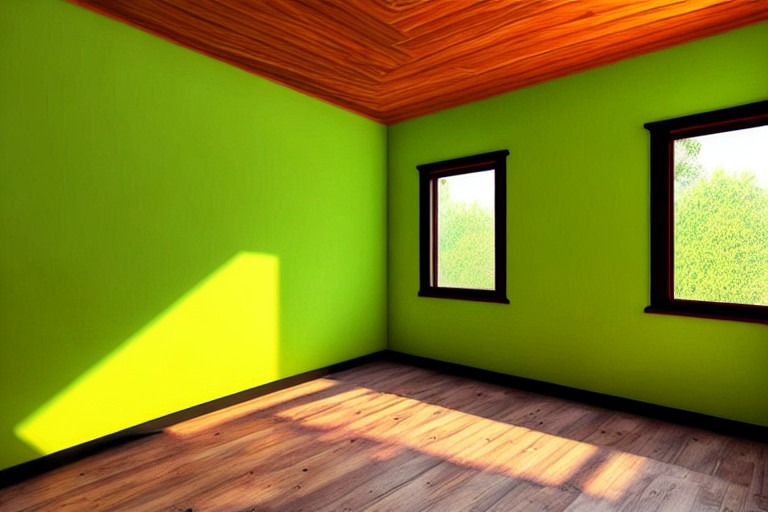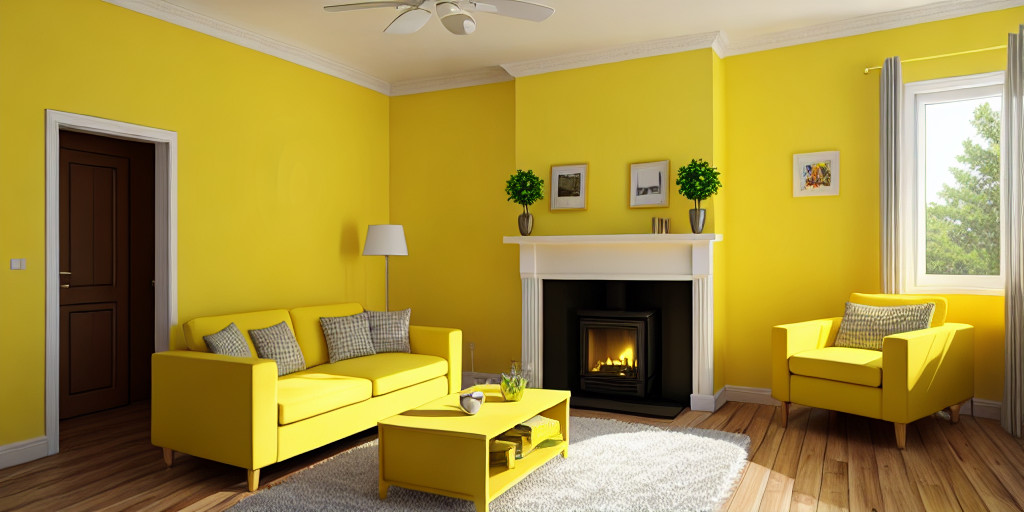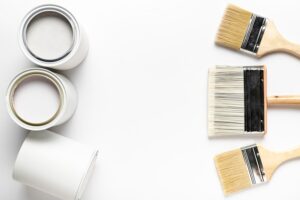Do you consider Cleaning Surfaces before Painting? Cleaning may sound like a big task, but it’s crucial. You see, paint sticks best to a clean surface, which makes it last longer. The method you choose for Cleaning Surfaces Before Painting depends on how it looks right now.
Properly cleaning surfaces before painting is a crucial step that can make or break the outcome of your project. If you’re planning to paint wooden, metal, or plastic surfaces, it’s critical to do the proper surface cleaning before painting to achieve a flawless finish.
For cleaning surfaces before painting, you need to know the right techniques, methods, and tools. So, to get the best results, it’s important to pay close attention to the surface cleaning process and make sure you follow the right steps.
This comprehensive Guide to Cleaning Surfaces before Painting will delve into the importance of preparing surfaces, various cleaning techniques, and the importance of degreasing. So, let’s roll up our sleeves and get ready to transform your surfaces into pristine canvases for your next paintwork masterpiece.
Importance of Proper Surface Preparation
Surface preparation before painting is not just a mere formality; it’s the foundation upon which a successful paint job is built. It involves a series of meticulous steps that ensure your chosen coating adheres flawlessly to the surface. You risk issues like paint peeling, chipping, and premature wear and tear without proper preparation.
Professional house painters know that the secret to a fantastic house painting, rather than a letdown, starts with preparation. If you don’t get your surfaces ready the right way, you might end up with uneven and streaky paint, not to mention those annoying bumps and lumps. Instead of achieving a smooth and flawless wall, you’ll be stuck with noticeable imperfections and uneven colouring.
The excitement of adding a fresh coat of paint might make you want to skip the prep work and dive right into painting. But trust me, taking this shortcut can backfire. Skipping this crucial step might actually make your project take longer or require more effort, as you might need extra coats of paint or even have to start from scratch._
Therefore, here’s the deal: Don’t underestimate the importance of cleaning surfaces before painting walls and areas. Invest some time learning the right techniques and commit to thoroughly. This small amount of time and effort can save you a lot in the long run, and you’ll definitely be happier with the final result._
The 6 Steps for Excellent Cleaning Surfaces Before Painting
There are six essential steps for surface Preparation before Painting, each playing a distinct role in achieving a long-lasting, professional finish:
Assessment of the Condition
Before diving into any painting project, take a close look at the condition of the surface. Identifying imperfections, old coatings, rust, and contaminants is essential. This assessment guides you in choosing the right technique and materials for the task.
Coating Removal
If the surface has an existing coating, it must be removed entirely. Applying new paint directly over old coatings can lead to bubbling and adhesion issues. Thoroughly stripping away the old coating ensures a smooth canvas for your new layer of paint.
Removal of Surface Contaminants and Imperfections
Over time, surfaces accumulate various contaminants like rust, mill scale, and dirt. To create a flawless base for painting, you should diligently remove these imperfections on the surface. Surface contaminants, including dirt, grease, fat, and salts, should be completely eradicated to prevent adhesion problems.
Removal of Loose Dirt
You have to remove loose dirt and debris before proceeding further. This step ensures that you put all efforts into surface cleaning for painting rather than wasting time on loose particles that can easily be swept away.
Applying an Adhesion Profile
Establishing an adhesion profile on the surface is essential. This profile connects the surface and the new coating, improving their stickiness. It’s similar to providing your paint with a sturdy surface to hold onto, guaranteeing it remains intact for a long time.
If you skip this step and don’t create the right surface profile, the bond between the coating and the surface may not be as strong as it should be. Most coating manufacturers recommend abrasive blasting as the best surface preparation.
Drying the Surface
Once the cleaning and preparation stages are complete, letting the surface dry thoroughly is essential. Moisture can interfere with the adhesion of paint, so patience is key.
Cleaning Techniques for Various Surfaces
Different surfaces require different cleaning techniques to achieve the best results:
Wooden Surfaces Paint
When dealing with wooden surfaces, start by sanding away imperfections and old paint. Next, clean the surface of any dust and debris. Finish by applying a suitable primer to enhance adhesion.
Degreasing wood surfaces: Grease and grime can secretly prevent paint from sticking well, so thoroughly degrease wood surfaces before you pick up that paintbrush. To clean a wooden surface:
- Use a mild detergent solution with a clean cloth.
- For stubborn grease spots, mix vinegar and water together.
- Rinse the surface well and let it dry completely before applying primer and paint. This will help the paint stick better and give your wooden surfaces a fresh new look.
Metal Surfaces Paint
When cleaning metal surfaces for painting or further treatment, it’s crucial to carefully remove any rust and mill scale using appropriate abrasive techniques such as sanding, wire brushing, or sandblasting.
After cleaning the surface, it’s important to ensure it’s entirely free of any contaminants that could interfere with the adhesion of subsequent coatings. To achieve the best results, use a primer that’s specifically formulated for metal surfaces.
Degreasing Metal Surfaces Paint: Metal surfaces often encounter tough grease and oil stains, especially in industrial or kitchen settings. If you want to paint metal surfaces, degreasing is an essential step. Start by using warm water and a grease-cutting detergent to scrub the metal.
For tougher grease, you may need to use a solvent-based cleaner. After cleaning, make sure to rinse the metal surface thoroughly and let it dry completely. Proper degreasing will ensure that your paint sticks firmly to the metal, preventing any unattractive peeling or flaking.
Plastic Surfaces Paint
Painting plastic surfaces requires extra care. Clean the surface thoroughly with a plastic-friendly cleaner to remove any grease or dirt. Use a plastic primer to improve paint adhesion.
Degreasing Plastic Surfaces Paint: Even plastic surfaces require some TLC before painting, including removing any grease or oily residues. It is absolutely crucial to clean the plastic properly before painting to achieve a smooth and long-lasting finish for your paint job. You must use warm, soapy water and a soft cloth to clean the plastic, and in case of stubborn grease spots, a mixture of baking soda and water can be highly effective.
Once you’re done cleaning, ensure that you rinse the plastic thoroughly and leave it to dry completely before applying the paint. This crucial step is vital to ensure that your paint bonds well with the plastic and gives you a flawless finish that lasts.
Degreasing surfaces is vital in surface preparation, especially for metal and plastic surfaces. Grease and oils can prevent paint from adhering properly, leading to unsightly flaws in the finish. Using a suitable degreaser, thoroughly clean the surface to remove all grease traces.
Cleaning surfaces before painting is crucial for a successful, long-lasting paint job. By following the correct surface preparation phases and utilising appropriate cleaning techniques for various surfaces, you can achieve a flawless finish that will stand the test of time. Whether revamping your home’s interior or embarking on an outdoor project, remember that a clean canvas is key to achieving stunning paintwork.
Trust 7CPM for your Surfaces Cleaning and an Excellent Painting
At 7CPM, we take pride in offering the finest cleaning and preparation services before painting. Whether you’re considering a new style and mood for your home or your commercial painting, trust us for top-notch results. Our expertise extends to exterior painting Sydney and interior painting Sydney, ensuring every corner is covered with precision and care.
Don’t hesitate – contact us today to transform your space with the best in the business. Your satisfaction is our guarantee.






